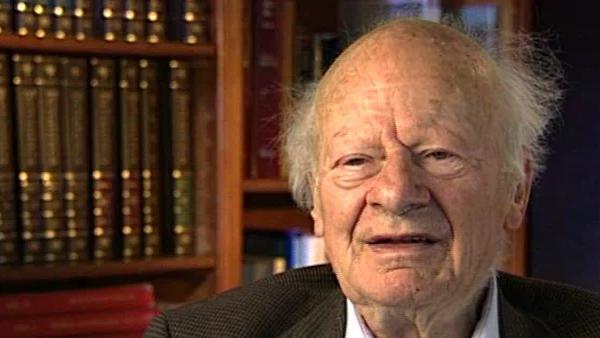NEXT STORY

My paper on energy levels in crystals
RELATED STORIES

NEXT STORY

My paper on energy levels in crystals
RELATED STORIES


|
Views | Duration | |
|---|---|---|---|
| 11. Controversy over whether electrons are waves or particles | 1486 | 01:52 | |
| 12. Max Born's papers on the theory of collision phenomena | 1035 | 02:13 | |
| 13. Born approximation | 1017 | 00:49 | |
| 14. Paul Peter Ewald | 923 | 00:40 | |
| 15. Working on atomic spectra and applying group theory to crystals | 995 | 04:44 | |
| 16. My paper on energy levels in crystals | 829 | 04:27 | |
| 17. Felix Bloch's theory of conduction in metals | 1 | 874 | 01:57 |
| 18. Applying the work of Hylleraas to the negative hydrogen atom | 720 | 02:43 | |
| 19. Getting into nuclear physics | 819 | 01:02 | |
| 20. Numbers prove theories | 1 | 1002 | 01:33 |


The important thing in the early days of quantum mechanics was atomic spectra. From atomic spectra Bohr had derived the initial quantum theory and the people around Sommerfeld, and Sommerfeld himself, had deepened it greatly and got many details. So I thought the most important thing now was to apply the new quantum mechanics to atomic spectra including the ionization potential of atoms, and there were very important papers by Wigner and von Neumann about the application of group theory to... to the theory of atoms, and so I decided the most important thing for me was to study group theory, which I did.
[Q] From... in which... in which book at the time?
There was a book by Speiser about group theory which I worked through at least half way, and at that time I really knew quite a lot about group theory. And then it's no use studying a book unless you apply it, unless you do some work of your own using it. Now I had learned about crystals from the Davisson-Germer theory and so I thought, let me apply this group theory to crystals. In fact that had been done many decades earlier, crystal groups, symmetry groups had been found by the crystallographers and Ewald knew all about that, but then it occurred to me that if an atom were put into a crystal then it no longer had spherical symmetry, but it had the symmetry of the crystal which is lower. So you would have a splitting of the energy levels in the crystalline field, just as you have in the Stark effect, a splitting in the electric... constant electric field. But of course it's different in a crystal and I proceeded to get all the possible groups and the representations of groups which applied inside the symmetry of a crystal and I calculated the splitting of atomic energy levels in... in that medium. And for instance, in... in the most symmetrical position in a crystal, in a cubic crystal, you have the three directions of space, x, y and z. But when you then have a D-state electron, the five wave functions of that are no longer all at one energy level, but they split; one wave function becomes like: x2 - y2 and the other becomes like xy and...
[Q] Cubic Harmonics.
These are the cubic wave functions, and I figured out for all types of crystal symmetries how the splitting would go.
The late German-American physicist Hans Bethe once described himself as the H-bomb's midwife. He left Nazi Germany in 1933, after which he helped develop the first atomic bomb, won the Nobel Prize in Physics in 1967 for his contribution to the theory of nuclear reactions, advocated tighter controls over nuclear weapons and campaigned vigorously for the peaceful use of nuclear energy.
Title: Working on atomic spectra and applying group theory to crystals
Listeners: Sam Schweber
Silvan Sam Schweber is the Koret Professor of the History of Ideas and Professor of Physics at Brandeis University, and a Faculty Associate in the Department of the History of Science at Harvard University. He is the author of a history of the development of quantum electro mechanics, "QED and the men who made it", and has recently completed a biography of Hans Bethe and the history of nuclear weapons development, "In the Shadow of the Bomb: Oppenheimer, Bethe, and the Moral Responsibility of the Scientist" (Princeton University Press, 2000).
Tags: Niels Bohr, Arnold Sommerfeld, Eugene Wigner, John von Neumann, A Speiser, Clinon Davisson, Lester germer
Duration: 4 minutes, 45 seconds
Date story recorded: December 1996
Date story went live: 24 January 2008